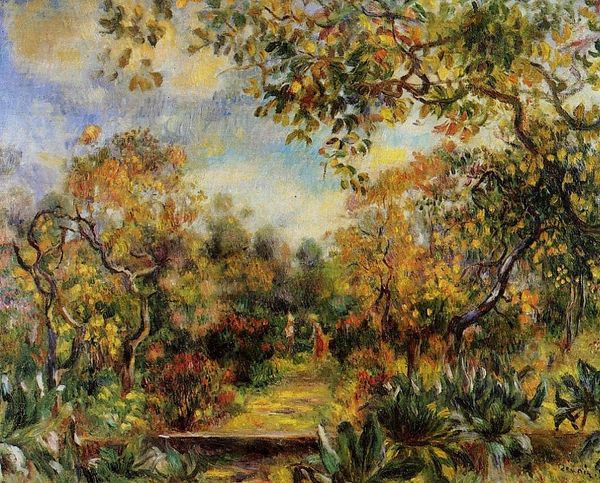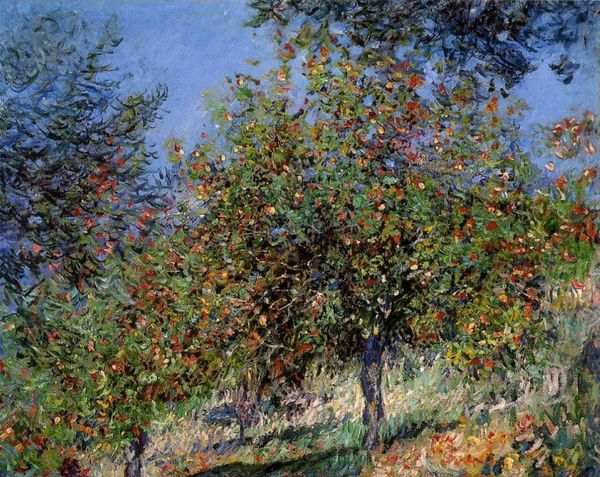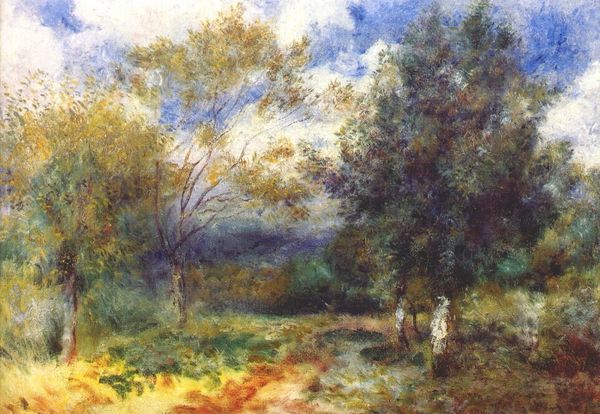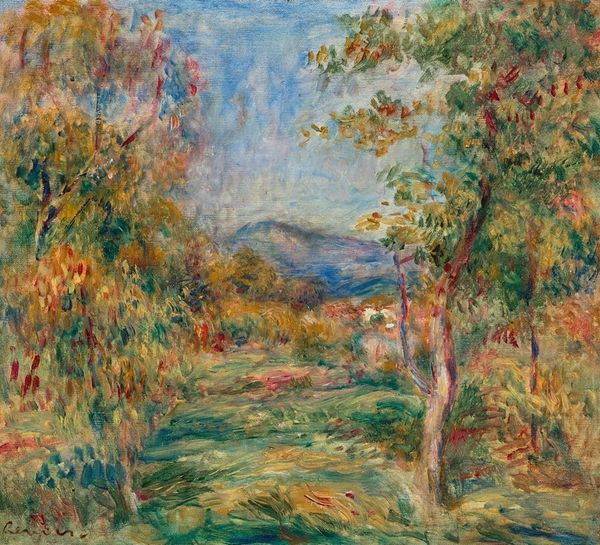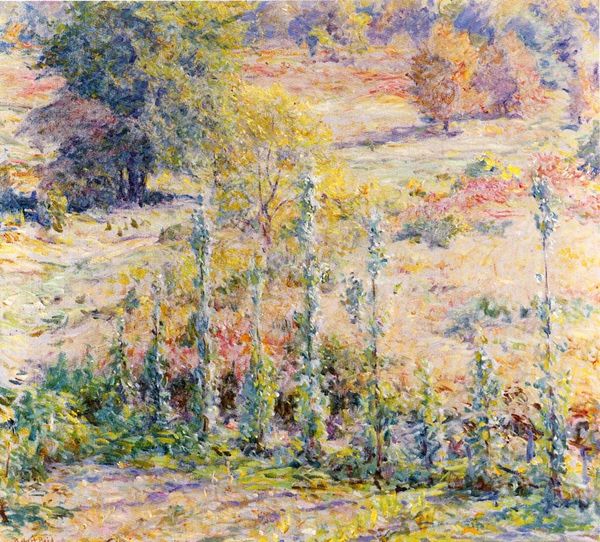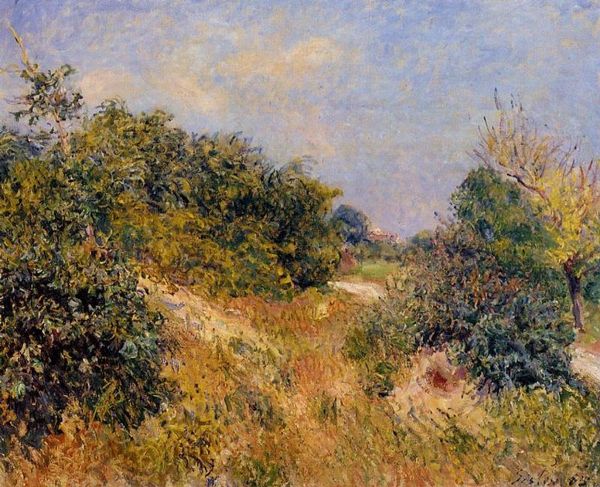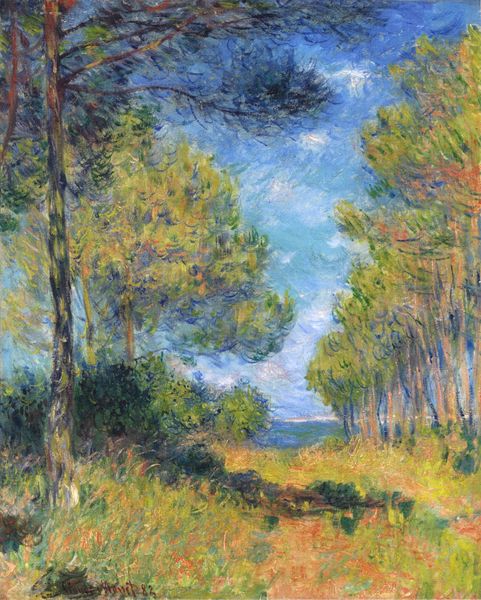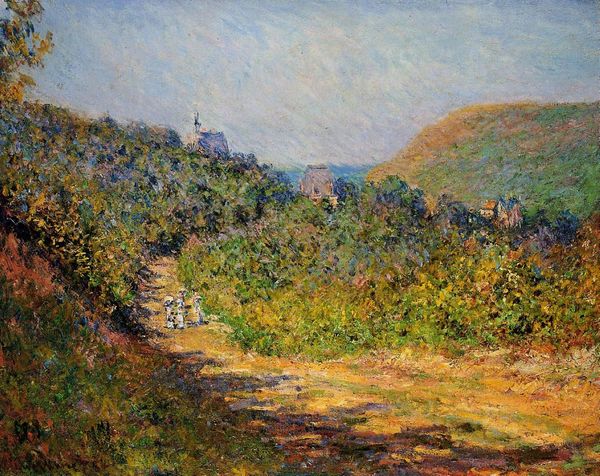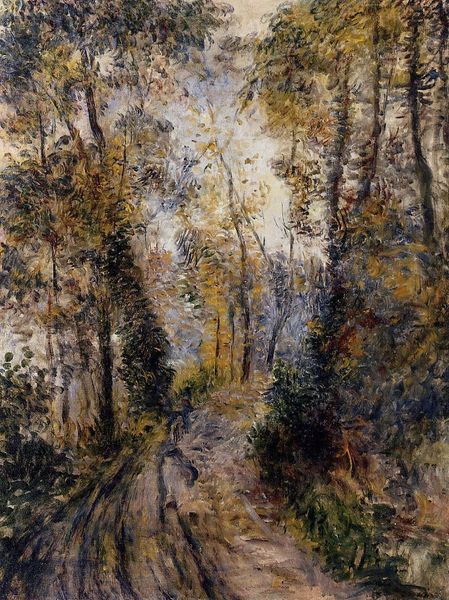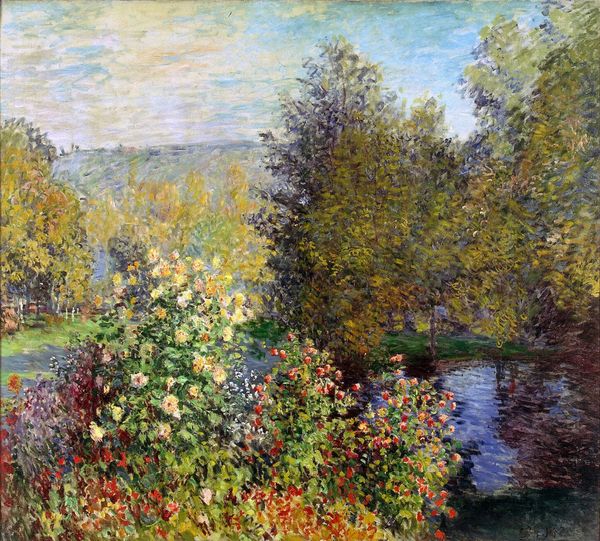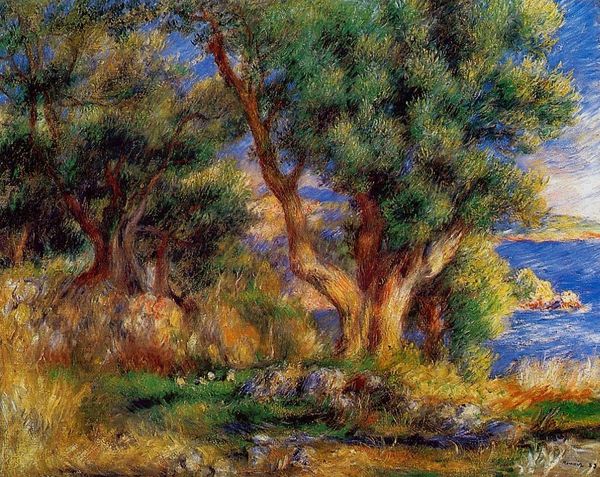
Copyright: Public domain
Editor: So, here we have Renoir's "Landscape with Mimosas" from 1912. It's an oil painting, very characteristic of his later impressionistic style. I'm immediately struck by how the vibrant yellow mimosas contrast against the hazy blues and greens in the background, creating a dreamlike effect. What are your thoughts on this work? Curator: It's fascinating to consider this work in the context of Renoir's late period. By 1912, Impressionism as a radical movement was long over. Yet, here we see Renoir doubling down on its principles, seemingly in isolation from the avant-garde currents shifting toward abstraction and Fauvism. Editor: In isolation? Curator: Yes. While artists like Matisse and Picasso were grabbing headlines, Renoir was in the south of France, battling rheumatism, painting these scenes. It almost feels like he's creating his own personal art world. This focus might not be about a desire for social or political reform, but rather about solidifying the values in impressionistic artwork that will resonate for a very long time. Editor: That makes sense, his world, on his terms. But was the south of France a retreat, or something else? Curator: Think about the Mediterranean coast at the time. It was becoming a popular resort for the European elite, a site of leisure and consumption. By painting this idealized landscape, Renoir wasn’t simply recording nature, but participating in and perhaps even shaping, the cultural image of the Riviera as a paradise. The question, of course, is who had access to this "paradise" and whose labor sustained it? Editor: So the beauty we see is connected to complex social realities? Curator: Precisely. These images are never neutral. Considering how these landscapes circulated—in exhibitions, reproduced in prints, purchased by wealthy collectors—helps us understand the power dynamics embedded in them. What seems like a simple landscape becomes a site of cultural and economic exchange. Editor: Wow, I never considered all of those social layers before. It definitely adds a whole new dimension to how I perceive the painting. Curator: Indeed. Art is a dialogue, always. I learned to ask, for example, what public stories this private landscape tells.
Comments
No comments
Be the first to comment and join the conversation on the ultimate creative platform.
